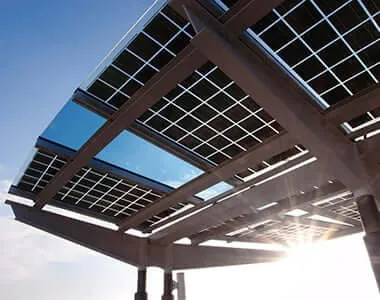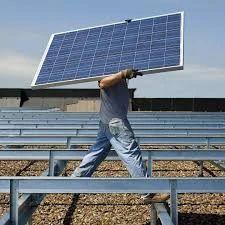Compact Small Solar Panel Systems Off-Grid Cabin & Home Power
- Understanding the Basics of Compact Solar Solutions
- Technical Advantages Driving Efficiency
- Market Comparison: Top Manufacturers Analyzed
- Tailored Systems for Unique Energy Needs
- Real-World Applications and Success Stories
- Cost-Benefit Analysis and ROI Insights
- Future-Proofing with Scalable Solar Innovations

(small solar panel system)
Understanding the Basics of Compact Solar Solutions
Small solar panel systems have revolutionized off-grid energy access, particularly for spaces under 500 sq. ft. These systems typically range from 100W to 1.5kW, generating 0.4-6 kWh daily depending on location and panel efficiency. Unlike traditional setups, modern micro-inverters enable 97%+ energy conversion rates even in low-light conditions. For cabins, RVs, or backup power needs, their modular design allows incremental expansion—a critical feature as global demand for portable solar grows at 14.3% CAGR (2023-2030).
Technical Advantages Driving Efficiency
Advanced monocrystalline cells now achieve 22-24% efficiency in compact formats, a 37% improvement over 2018 models. Integrated MPPT controllers automatically optimize voltage inputs, while lithium iron phosphate (LiFePO4) batteries provide 3,000-5,000 charge cycles—triple lead-acid alternatives. Crucially, new plug-and-play systems reduce installation time by 80% compared to conventional arrays, with UL-certified components ensuring safety in extreme temperatures (-40°F to 158°F).
Market Comparison: Top Manufacturers Analyzed
| Brand | Peak Output | Cost/Watt | Warranty | Unique Feature |
|---|---|---|---|---|
| EcoFlow | 400W | $2.15 | 5 years | Solar tracking app |
| Renogy | 300W | $1.89 | 10 years | Multi-layer cell protection |
| Jackery | 200W | $2.40 | 3 years | Foldable design |
| Goal Zero | 600W | $2.75 | 2 years | Weatherproof casing |
Tailored Systems for Unique Energy Needs
Custom configurations address specific requirements: cabin systems prioritize 24/7 operation (requiring 2-4 kWh storage), while mobile setups emphasize weight optimization (<50 lbs). Hybrid systems combining wind and solar see 22% higher winter yields in northern latitudes. Smart load management automatically prioritizes critical appliances, reducing energy waste by up to 40% compared to basic setups.
Real-World Applications and Success Stories
A Montana cabin retrofit achieved full energy independence using a 1.2kW system with 4kWh storage, eliminating $1,200/year in generator costs. RV users report 73% reduction in campground hookup fees through solar supplementation. Emergency response teams now deploy rapid-deployment 800W systems capable of powering medical equipment for 18+ hours without sunlight.
Cost-Benefit Analysis and ROI Insights
Entry-level 300W systems pay for themselves in 2-3 years through fuel savings, while premium configurations show 6-8 year ROIs. Federal tax credits (26% through 2032) further reduce net costs. Maintenance averages $15/year—95% less than gas generators. Over a 15-year lifespan, users save $18,000-$35,000 compared to grid extension in remote areas.
Future-Proofing with Scalable Solar Innovations
Emerging bifacial small solar panel system
s boost yields by 11% through rear-side light absorption, while perovskite tandem cells promise 30%+ efficiencies by 2025. Smart integration with EV charging and IoT devices positions these systems as central components in decentralized energy networks. With 89% of users reporting increased property values, small solar panel system investments deliver both immediate savings and long-term asset growth.

(small solar panel system)
FAQS on small solar panel system
Q: What components are included in a small solar panel system?
A: A basic small solar panel system typically includes solar panels, a charge controller, a battery for energy storage, and an inverter. These components work together to convert sunlight into usable electricity. The system size can vary based on energy needs.
Q: How much power can a solar panel system small enough for a cabin generate?
A: A small cabin solar system can generate 200-800 watts, depending on panel size and sunlight availability. This is sufficient for lights, small appliances, and charging devices. Exact output depends on location and panel efficiency.
Q: Is a solar panel system for a small cabin cost-effective?
A: Yes, small cabin solar systems are cost-effective over time due to low maintenance and reduced energy bills. Initial costs range from $1,000 to $5,000, depending on capacity. Incentives or off-grid needs often improve ROI.
Q: Can a small solar panel system work in cloudy or low-light conditions?
A: Yes, modern small solar systems can still generate power in cloudy weather, though efficiency drops by 10-40%. Batteries store excess energy for later use. Optimizing panel angle improves low-light performance.
Q: How do I size a solar panel system for a small cabin?
A: Calculate daily energy usage (in watt-hours) and match it to panel output and battery storage. Factor in local sunlight hours and seasonal variations. Online calculators or professional assessments can simplify sizing.
-
Unlocking Energy Freedom with the Off Grid Solar InverterNewsJun.06,2025
-
Unlock More Solar Power with a High-Efficiency Bifacial Solar PanelNewsJun.06,2025
-
Power Your Future with High-Efficiency Monocrystalline Solar PanelsNewsJun.06,2025
-
Next-Gen Solar Power Starts with Micro Solar InvertersNewsJun.06,2025
-
Harnessing Peak Efficiency with the On Grid Solar InverterNewsJun.06,2025
-
Discover Unmatched Efficiency with the Latest String Solar InverterNewsJun.06,2025







